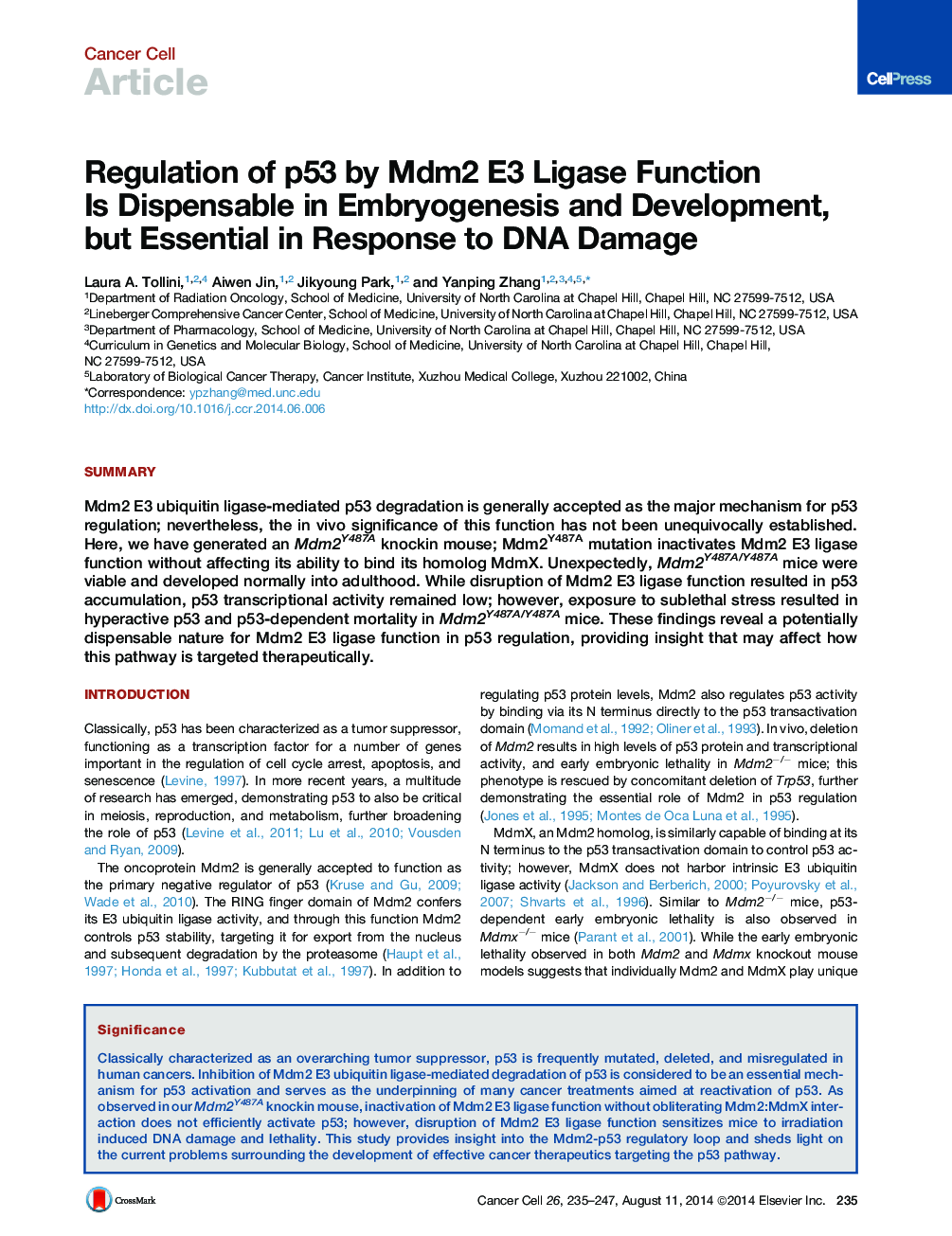| Article ID | Journal | Published Year | Pages | File Type |
|---|---|---|---|---|
| 2107093 | Cancer Cell | 2014 | 13 Pages |
•Mdm2Y487A loses E3 ligase activity for p53 degradation, but retains MdmX binding•Robust Mdm2 E3 ligase function is dispensable for embryogenesis and development•In vivo, Mdm2Y487A mutation results in increased p53 stability, but not activity•Mdm2Y487A/Y487A mice demonstrate p53-dependent hyperradiosensitivity
SummaryMdm2 E3 ubiquitin ligase-mediated p53 degradation is generally accepted as the major mechanism for p53 regulation; nevertheless, the in vivo significance of this function has not been unequivocally established. Here, we have generated an Mdm2Y487A knockin mouse; Mdm2Y487A mutation inactivates Mdm2 E3 ligase function without affecting its ability to bind its homolog MdmX. Unexpectedly, Mdm2Y487A/Y487A mice were viable and developed normally into adulthood. While disruption of Mdm2 E3 ligase function resulted in p53 accumulation, p53 transcriptional activity remained low; however, exposure to sublethal stress resulted in hyperactive p53 and p53-dependent mortality in Mdm2Y487A/Y487A mice. These findings reveal a potentially dispensable nature for Mdm2 E3 ligase function in p53 regulation, providing insight that may affect how this pathway is targeted therapeutically.
Graphical AbstractFigure optionsDownload full-size imageDownload high-quality image (185 K)Download as PowerPoint slide
